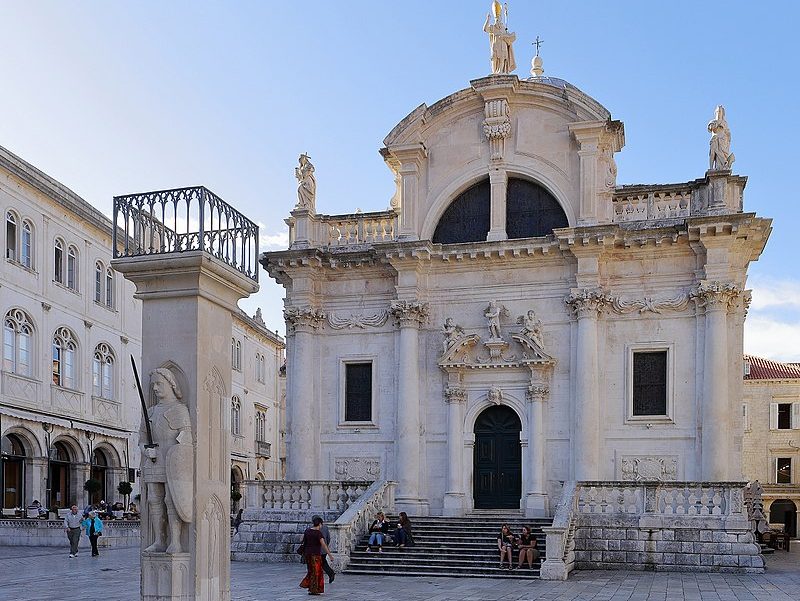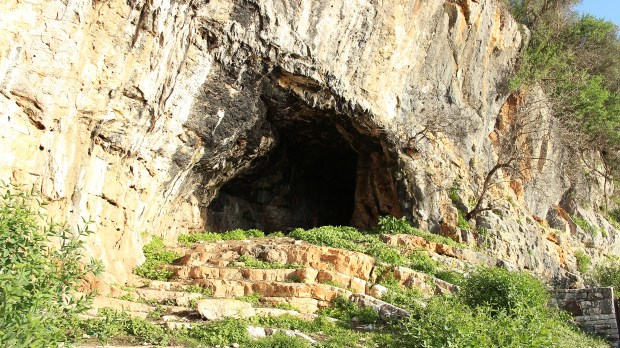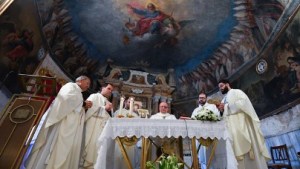Blaise of Sebaste was a physician and bishop of the ancient Roman Armenian city of Sebastea, today’s Turkish Sivas, venerated as a Christian saint and martyr in the Catholic, Eastern Orthodox, and Oriental Orthodox churches. He is regarded as the patron saint of wool combers and ear-nose-and-throat illnesses. According to tradition, he was martyred by being beaten, tortured with iron combs, and finally beheaded.
One of the very first references to St. Blaise is found in the medical writings of Aëtius of Amida. Aëtius was a Byzantine Greek physician and medical writer (his writings appear to date from the end of the 5th century or the beginning of the 6th), distinguished by the extent of his erudition and by being one of the very first physicians in Late Antiquity to include Christian prayers (and some Egyptian spells and charms) in his scientific writings. He invokes the help of St. Blaise to remove a bone stuck in the throat.

In Chapter 46 of his chronicles, Marco Polo claims to have visited the place in which “Messer Saint Blaise obtained the glorious crown of martyrdom” – that is, Sebastea. Other medieval writings also mention a shrine that was later lost. However, the Christian saint is back under the spotlight in Sivas – the (nowadays) Turkish province where he served as a bishop. He is believed to be buried there, and archeologists are now combing the ancient site of a memorial in his honor to find his remains.
In 316, the governor of Cappadocia and Lesser Armenia, Agricolaus, began a persecution by order of the Emperor Licinius. As a bishop, Blaise was seized. After being interrogated and tortured, he was hurried off to prison, and subsequently beheaded.
The legendary Acts of St. Blaise were written 400 years after his death, and are apocryphal and, perhaps, fictional. In any case, the legend is as follows:
Blaise, who had studied philosophy in his youth, was a doctor in Sebaste in Armenia, the city of his birth, who exercised his art with miraculous ability, good-will, and piety. When the bishop of the city died, he was chosen to succeed him, with the acclamation of all the people. His holiness was manifest through many miracles: from all around, people came to him to find cures for their spirit and their body; even wild animals came in herds to receive his blessing. In 316, Agricola, the governor of Cappadocia and of Lesser Armenia, having arrived in Sebastia at the order of the emperor Licinius to kill the Christians, arrested the bishop. As he was being led to jail, a mother set her only son, choking to death of a fish-bone, at his feet, and the child was cured straight away. Regardless, the governor, unable to make Blaise renounce his faith, beat him with a stick, ripped his flesh with iron combs, and beheaded him.
The cave of St. Blaise
Different places around the Mediterranean claim to be the cave of St. Blaise. One of them is the Shpella e Shën Vlashit (literally, “the cave of St. Blaise” in Albanian), a rather small cave in Laç, in northwestern Albania – not to be confused with the Greek cave of St. Blaise, in Panagea, or the cave of St. Blaise in Mount Argeas (the Turkish Erciyes Daği volcano). It is thought to have been the place where St. Blaise hid during the persecution. It remains a popular pilgrimage site to the day: the cave was frequented by wild beasts, which he healed when they were sick or wounded.
Now, some historians claim that this St. Blaise (he of the Albanian cave, that is) is not the same St. Blaise of Armenia-Turkey, but rather a reference to a pre-Christian deity with a similar name. Scholars explain the cave was dedicated to Veles, a pagan idol who was venerated by early Slavs as a kind of guardian of their flocks. In fact, in the Russian city of Yaroslavl, the first church built on the site of Veles’ pagan shrine was dedicated to St. Blaise.


